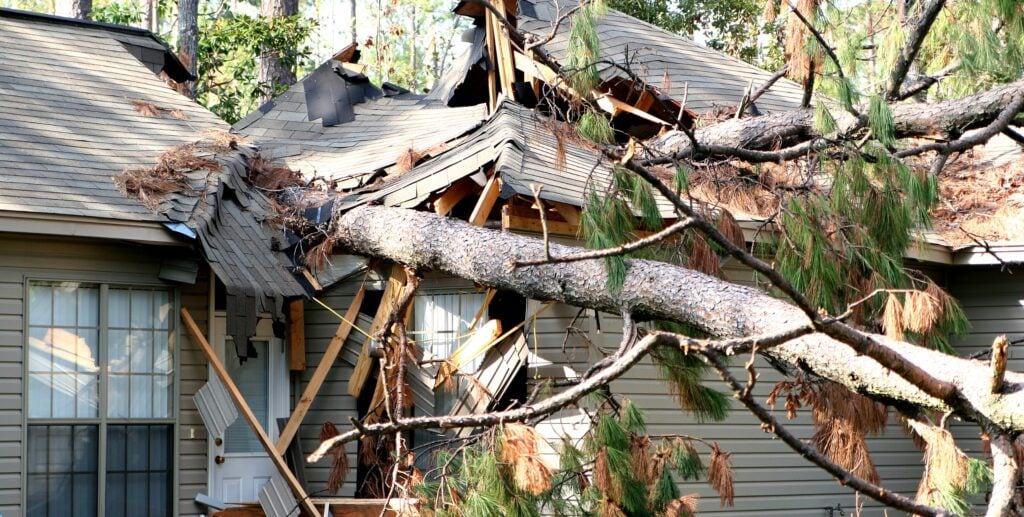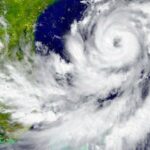This article is presented by NREIG. Read our editorial guidelines for more information.
Property insurance provides crucial protection for investment properties, offering financial protection against a variety of risks that could otherwise lead to devastating losses. According to the Insurance Information Institute, about one in 20 insured homes file a claim each year. And while some perils that cause the costliest damage are unavoidable, such as hurricanes, many can be mitigated through proactive measures.
These are the five most expensive perils for investment properties and provide tips on how to prevent and mitigate these risks.
1. Theft, Vandalism, and Malicious Mischief
Theft, vandalism, and malicious mischief account for a significant portion of real estate investment property claims, particularly those undergoing renovation or vacant while on the market to sell. These properties often have low traffic and are prime targets for thieves seeking new appliances, HVAC systems, construction materials, and tools.
Theft and vandalism losses can vary from a few hundred to tens of thousands of dollars. It all depends on what a thief/vandal is after and what they can take/damage before the threat of discovery scares them off. Our data concludes that the average cost of a break-in at an investment property ($8,000) is four times the national average ($2,000) for an owner-occupied home.
Theft, vandalism, and malicious mischief mitigation tips
- Keep the property looking lived in by maintaining the yard and ensuring proper lighting.
- Secure doors and windows with sturdy hardware, and consider installing an alarm system with monitoring.
- Ask neighbors to keep an eye out for suspicious activity and report it to you and the police.
- Use plywood, steel, or plexiglass shields to protect the property when appropriate.
2. Water Damage
Water losses, most often caused by burst pipes during winter freezes, are one of the most common yet preventable losses we see. These incidents can lead to extensive damage. While the data we’ve collected over the last five years shows that the average water loss ranges from $6,000 to $16,000 in damages, recent losses in our program reach up to $138,000.
The reason for this wide range? If the leak is discovered quickly, damage can be minimized, but if the water runs for several days before anyone notices, the loss can be catastrophic. Cleanup is messy, and it can take a significant amount of time to restore a property to an inhabitable or sellable condition after a water loss.
Water damage mitigation tips
Occupied properties:
- Insulate pipes in exterior walls, crawl spaces, and attics.
- In cold snaps, advise tenants to open the cabinet doors under sinks to allow heat to circulate around uninsulated pipes and let warm water drip overnight, especially from faucets on outside walls.
Vacant properties:
- Set the thermostat to no lower than 55 degrees Fahrenheit.
- If you are unable to do so, have a property manager or neighbor check the house daily during cold snaps.
- Winterize the house by turning the water off at the street and draining the plumbing system.
3. Wind/Hail
As we’ll discuss further in the hurricanes and tornadoes section, wind and hail events have become increasingly frequent and severe. In early 2024 alone, multiple wind/hail losses exceeded $30,000 in damages in our program, with the highest reported loss at $164,000. These events primarily impact Texas, Oklahoma, and Missouri, often resulting in roof damage, broken windows, and damage to detached structures like garages or sheds.

Wind/hail mitigation tips
Property reinforcements:
- Regularly inspect and repair roofs as needed.
- Install storm shutters or impact-resistant windows.
- Remind tenants to secure outdoor furniture and other items or store them inside when significant storms are forecasted.
4. Hurricane/Tornado
The increasing severity of weather events such as hurricanes and tornadoes has significantly influenced the cost of property insurance. Coastal states like Florida, Texas, and Louisiana are particularly vulnerable to hurricanes, which can cause extensive damage. For instance, Hurricane Ian in 2022 resulted in $113.1 billion in damages, making it the third most expensive hurricane on record.
Tornadoes have also been notably destructive as of late, with a staggering 466 reported in just three consecutive months in 2023. These natural disasters often result in roof damage, broken windows, uprooted trees, and storm surges leading to flooding.
Our internal data supports the claims many climate change experts and weather professionals have made: These weather phenomena are increasing in severity and frequency. Recent hurricane and tornado losses in our program have been substantial, with damage totaling up to $202,000 at one property and $250,000 at another.
Hurricane/tornado mitigation tips
Property preparations:
- Trim or remove damaged trees and limbs.
- Secure loose gutters and downspouts and clear debris to prevent water damage.
- Retrofit to secure and reinforce roofs, windows, and doors, including garage doors.
Safe rooms:
- Build safe rooms in basements, atop concrete slabs, or in first-floor interior rooms.
- Ensure safe rooms are adequately anchored, can withstand high winds, and are made of materials resistant to flying debris.
5. Fire
Fire is both the most expensive and one of the most common types of residential investment property claims. The Insurance Information Institute (III) reports that the average house fire causes approximately $40,000 in damage.
However, claims can escalate significantly, as exemplified by a recent fire causing $375,000 in damage to a property in our program, and another resulting in a $460,000 loss. Fires can be destructive not only to the structure itself but also to a tenant’s contents, home appliances, and neighboring properties.
Fire mitigation tips
Occupied properties:
- Test smoke alarms monthly to ensure they are operational.
- Provide fire extinguishers and educate tenants on their proper use.
- Install fire suppression products like StoveTop FireStop to contain kitchen fires.
Vacant properties:
- Layer security measures to prevent unauthorized entry.
- Keep the property looking like it has been lived in to deter vandals.
- Encourage neighbors to report suspicious activity.
Final Thoughts
While some of the most expensive property losses, such as those caused by hurricanes, tornadoes, and other severe weather events, are unavoidable, many risks can be mitigated through proactive measures. Property insurance remains a critical safety net, but to avoid premium increases and extensive losses, you must take additional mitigation steps.
This article is presented by NREIG

NREIG is a national, independent insurance agency, offering the most comprehensive, and flexible industry-leading insurance program for residential real estate investment properties. Our team of advisors and specialists delivers unmatched service and streamlined insurance solutions for investors with single-family and small multifamily rentals, renovation projects, and vacant homes. Seamlessly make coverage changes as your portfolio fluctuates, and pay only for the coverage you need each month.
Note By BiggerPockets: These are opinions written by the author and do not necessarily represent the opinions of BiggerPockets.



